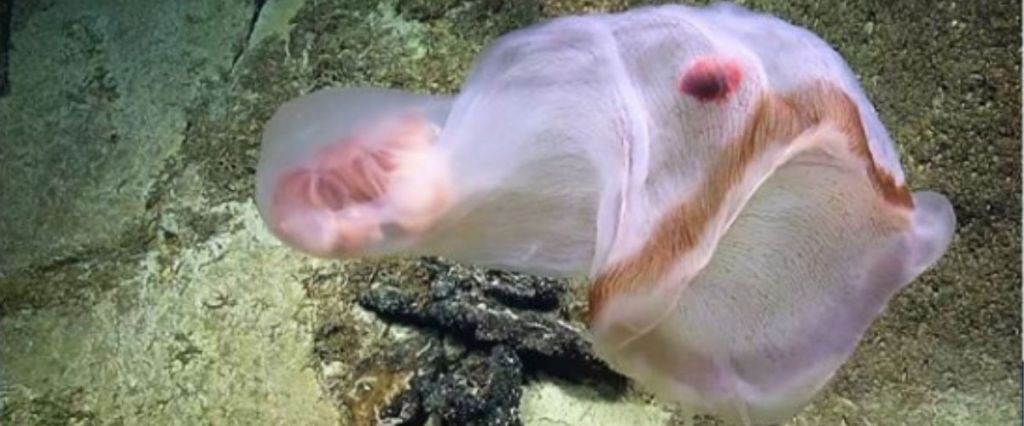Even among the strange and mysterious group of ancient animals known as the jellyfish, the Deepstaria jellyfish is unique. A fact that has now been recorded on video by the Nautilus, a Pacific Ocean research vessel.
Fun fact: the Nautilus has also captured footage of a googly-eyed stubby squid and a weird purple orb.
Live Science reports that, halfway between the U.S. and Australia, the Nautilus spotted a jellyfish that appeared as a ghost….at first.
https://www.instagram.com/p/BjDS_I8As4l/
Then, it unfurled and they got a glimpse of the geometric mesh membrane that revealed its identity: Deepstaria. That, along with its distinctively flowing bell and lack of tentacles, are its most distinguishing features.
The rest of the video is the jellyfish changing shape, from what looks like a crumpled plastic bag to a blanket.
https://www.instagram.com/p/B2FBkwBlF8J/
The jellyfish was first discovered by a submersible called the Deepstar 4000 (designed by Jacques Cousteau) in the 1960s, and since then it has only been spotted about a dozen times. Most of the details of its existence remain a mystery to researchers.
https://www.instagram.com/p/BXjDE86F1Z0/
That’s not likely to change anytime soon, which makes this video all the more spectacular.
Science is so cool, y’all. Images like these make it pretty darn hard to disagree.






